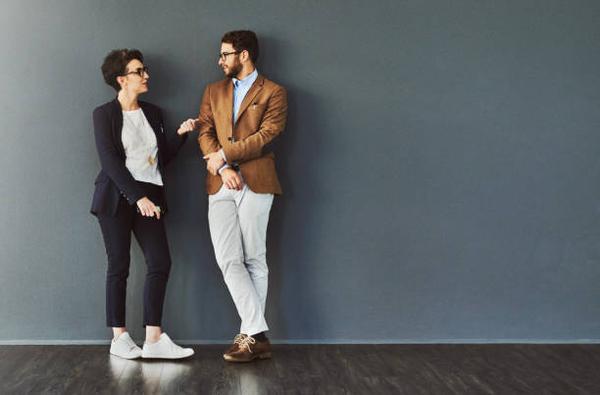
Color in business casual attire sends a variety of non-verbal messages that can make you appear sophisticated, powerful and confident. It can also help you communicate warmth, trust and artistic expression.
A monochromatic color palette uses different shades and tints of the same hue to create a look that balances sophistication with personal style. This approach is especially appropriate for women who work in a professional setting that allows for a laidback style.
Professional Colors
When it comes to business casual, the goal is to strike a balance between comfort and professionalism. Professional colors, such as black, white, gray, and navy blue convey power and sophistication. Blue shades, including royal blue and light blue, evoke feelings of trustworthiness and approachability.
When choosing colors for your business casual wardrobe, consider your audience and workplace culture. For example, jeans are not typically appropriate for a business casual look in a https://insidemen.vn/ law office or financial company. However, they might be fine for a tech startup where employees are constantly working at their computers.
Dress pants bought separately from a suit should be tailored to fit your body type and flatter your shape. Wide leg pants or khakis are classic options, while boot cut styles are ideal for curvy ladies. Slim or skinny pants can appear too casual for a business casual look, but if they are tailored in a fitted yet relaxed fashion they can make a sophisticated statement.
When it comes to blouses and tops, long-sleeved button-down shirts are a must. Choose shirts with subtle patterns or stripes for a more approachable vibe. T-shirts or polo shirts should be avoided, unless they are explicitly allowed in your workplace’s dress code. Shirts should be neatly pressed and fit well. A nice collar is appropriate in most business casual settings, while a tie isn’t necessary.
Neutrals
Business casual is a great dress code option for any professional to use. It doesn’t restrict style or creativity like a suit dress code, but also doesn’t allow as much informality as jeans and a t-shirt. Depending on the company culture, the business casual dress code may have different requirements for tops, bottoms, and accessories.
Women’s business casual tops include blouses, button down shirts, and tailored sweaters in neutral shades or subtle patterns. Tops should have long sleeves and a modest neckline. Tank tops, spaghetti straps, and see-through fabrics are inappropriate in most professional settings. Sheath dresses and casual skirts that fall below the knee are acceptable, as are pencil-cut skirts. Pants and slacks should be pressed khaki, corduroy, cotton, or wool, but not denim.
Men’s business casual bottoms include pants, slacks, and tailored trousers in neutral colors or light pastel shades. Blazers and bomber jackets can be worn over non-neutral tops, but should be in more conservative tones like navy or gray. Jeans are generally a no-go in most professional settings, but if the company has a more casual culture, they might be considered if they are dark wash and free of distressing or fraying.
Shoes should be polished and comfortable, but not sneakers or flip-flops. Oxfords, derby shoes, and loafers are appropriate shoe options for the business casual dress code.
Accent Colors
For those who want to add flair to their business casual look, accent colors like pink, yellow and red can enhance your outfit. However, it’s important to limit the amount of color you wear in your ensemble. When worn as a base, neutral shades like white, gray, black and brown are the best choice.
Brown conveys a sense of stability and maturity that can be very effective for professional wear. It is a great accent against dress pants and can convey a more sophisticated image than some other accent colors, such as red. Red evokes feelings of passion, so it should only be used as an accent color rather than as a primary color.
A shift from traditional formal dress has allowed for more flexibility in business casual attire. Balancing personal style with professionalism is essential to a successful career. Dress pants and blouses in a variety of colors, paired with well-fitted blazers can elevate your look to meet the standards of professional attire.
Seasonal Colors
As the seasons change, so too should your business casual wardrobe. The colors that suit the season can enhance your look and help you maintain a professional yet updated style throughout the year. These seasonal colors can be standard hues that are associated with a particular season, as well as trendy shades that come in and out of style.
For example, blue is a color that looks great in any season, but it may be more flattering for your complexion during the wintertime. It is a classic shade that conveys trustworthiness and professionalism, especially when paired with black pants or skirts.
The same goes for other seasonal colors, such as green, orange, and purple. You might find that you look more vibrant or energetic when you wear these colors, so they’re great for boosting your mood on a dull day or when you want to show off your personality in a more playful way.
When it comes to business casual, you should avoid the colors that are too loud or too bright for your personal taste, but you can certainly add accents in these hues as long as they complement the neutrals in your closet. Keeping a balanced approach to your style is the key to success in any workplace environment.




